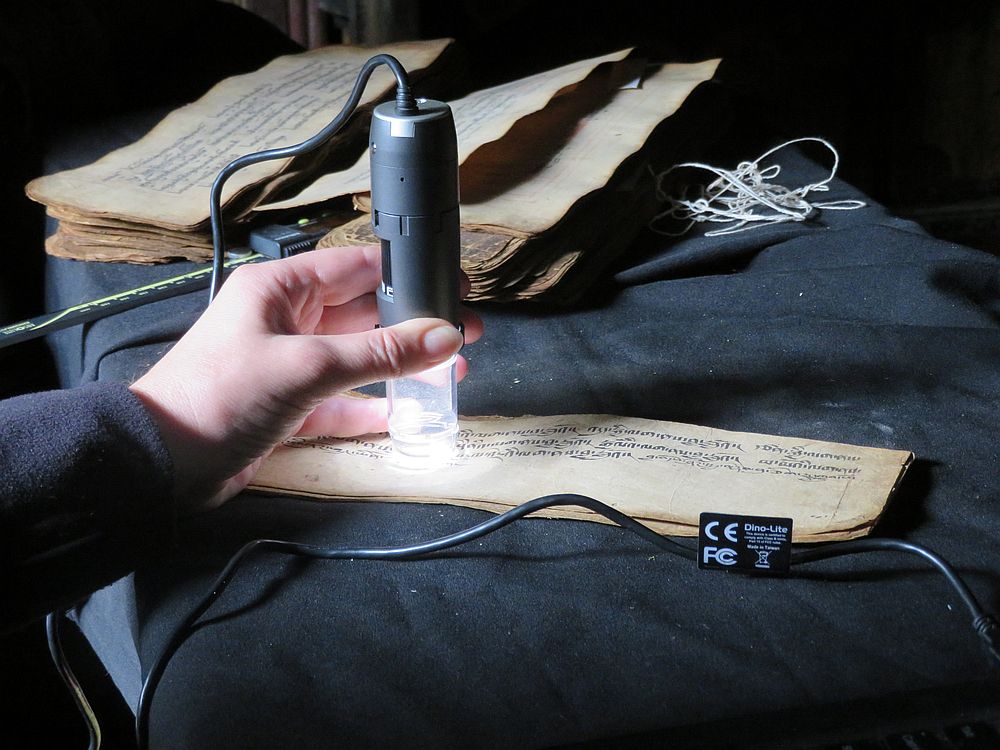
| PL |
Provenance study

Estimating the date and origin of Tibetan books is a difficult challenge, but it is fundamental for many fields of Tibetan Studies. It is rare that a date of production appears in a manuscript, and the identity of a donor, artist, owner or other person associated with the book, about whose lifetime we might have reliable information, appears only occasionally. Knowledge of the text and its colophons should always be the first step in attempting to date a given manuscript. Unfortunately, in the present state of the field, this too often tends to be also the last step used for identification and all dating efforts tend to be limited to the content of the text. However, the identification of individuals, their lineages, and the names of their teachers often helps but cannot distinguish an original text from a later copy or forgery. For these reasons, other possible sources of information should be taken into consideration as well. Moreover, many books do not furnish any chronological information whatsoever in the text or colophon. In all such cases, the most reliable results may be derived from technological and material analyses.
At present, prospects for finding “fingerprints” of time and origin in materials are promising, but basic data is still being gathered; once sufficient information is established, it should become possible to define points of reference in order to identify books from a regional and temporal perspective. Knowledge of materials and technology help in the dating of manuscripts because some of the materials, as well as some of the technologies through which books and their elements were produced, may be found only in particular regions and during specific periods of time.
Material study: Tibetan paper and ink

While there is a suggestion that paper was available in the Zhang-zhung kingdom in Western Tibet and that the invitation letters to the Chinese imperial princess were already written on paper, the Tang Annals mention that in 648 that Tibetan emperor Songtsen Gampo requested paper, ink, and other writing utensils from the Chinese emperor. Identification of Daphne species fibers in samples of Tibetan manuscripts from Dunhuang supports the view, affirmed in textual sources, that Tibetans were producing paper at least by the ninth century and that they used plants of the Thymelaeaceae family—which grow widely in the Himalayas—as raw materials. Tibetan paper was thus originally made from shrubs of these species (shog shing, “paper trees,” in Tibetan), which usually grow in valleys up to an altitude of 3600m above sea level. Even higher above on Tibetan plateau the roots of the Stellera chamaejasme species (re lcag pa in Tibetan) were special material for papermaking. Sometimes it has been suggested that paper made from re lcag pa is the “original” Tibetan paper. However, there is no evidence of the fibers of these plants in the Tibetan manuscripts found in Dunhuang. The oldest samples of Stellera species in Tibetan manuscripts have been identified in a manuscript from Central Tibet dated to the tenth century and one from Western Tibet dated to the eleventh. After fifteenth century Stellera came to be often added to Daphne and Edgeworthia, possibly for increasing the softness of Daphne paper to make it more absorbent and thus suitable for printing. When used alone, the re lcag pa root yields a particularly soft type of paper, which, owing to the anatomical features of its fibers, is considered by Tibetan papermakers to be of lower quality than bark paper.

The inks employed in Tibetan books and documents were manufactured by craftsmen according to diverse recipes and then mixed with water immediately before use. Most ink is black, but we also find red and occasionally other colors in Tibetan books, as well as inks prepared with precious minerals for special purposes. Tibetan black ink (snag tsha) is most often composed of soot mixed with animal glue. In general, carbon-based inks are produced by a dispersion of soot or black carbon particles in a water-soluble binder. Various recipes for its preparation include, as the ink’s main components, soot derived from burning resinous wood (such as Pinus roxburghii, often used in Nepal, or Pinus wallichiana in Bhutan), butter in lamps, or other combustible substances. For colors other than black, the appropriate plant or mineral pigments were pulverized together with a mixture of glue, sometimes made by boiling yak hide and bones. Other organic components could be added, such as gum, honey, borax, or, for special purposes, unusual and extravagant materials, such as medicinal substances, drops of blood, or crematory ashes, that modified the ink’s real or imagined properties according to need. Besides their organic compounds, inks may also contain characteristic trace elements that permit us to distinguish them.
HOME | INTRODUCTION | BACKGROUND | FORMAT AND LAYOUT | PEOPLE | NEWS | CONTACT